27 巻, 9 号
September
選択された号の論文の10件中1~10を表示しています
- |<
- <
- 1
- >
- >|
Original Articles
Clinical studies
-
2004 年 27 巻 9 号 p. 619-624
発行日: 2004年
公開日: 2005/03/04
PDF形式でダウンロード (61K) -
2004 年 27 巻 9 号 p. 625-631
発行日: 2004年
公開日: 2005/03/04
PDF形式でダウンロード (46K) -
2004 年 27 巻 9 号 p. 633-639
発行日: 2004年
公開日: 2005/03/04
PDF形式でダウンロード (50K) -
2004 年 27 巻 9 号 p. 641-646
発行日: 2004年
公開日: 2005/03/04
PDF形式でダウンロード (33K) -
2004 年 27 巻 9 号 p. 647-656
発行日: 2004年
公開日: 2005/03/04
PDF形式でダウンロード (272K) -
2004 年 27 巻 9 号 p. 657-661
発行日: 2004年
公開日: 2005/03/04
PDF形式でダウンロード (87K) -
2004 年 27 巻 9 号 p. 663-667
発行日: 2004年
公開日: 2005/03/04
PDF形式でダウンロード (30K) -
Excessive Alcohol Intake Increases the Risk of Arterial Stiffening in Men with Normal Blood Pressure2004 年 27 巻 9 号 p. 669-673
発行日: 2004年
公開日: 2005/03/04
PDF形式でダウンロード (45K)
Experimental studies
-
2004 年 27 巻 9 号 p. 675-683
発行日: 2004年
公開日: 2005/03/04
PDF形式でダウンロード (384K) -
2004 年 27 巻 9 号 p. 685-693
発行日: 2004年
公開日: 2005/03/04
PDF形式でダウンロード (679K)
- |<
- <
- 1
- >
- >|
